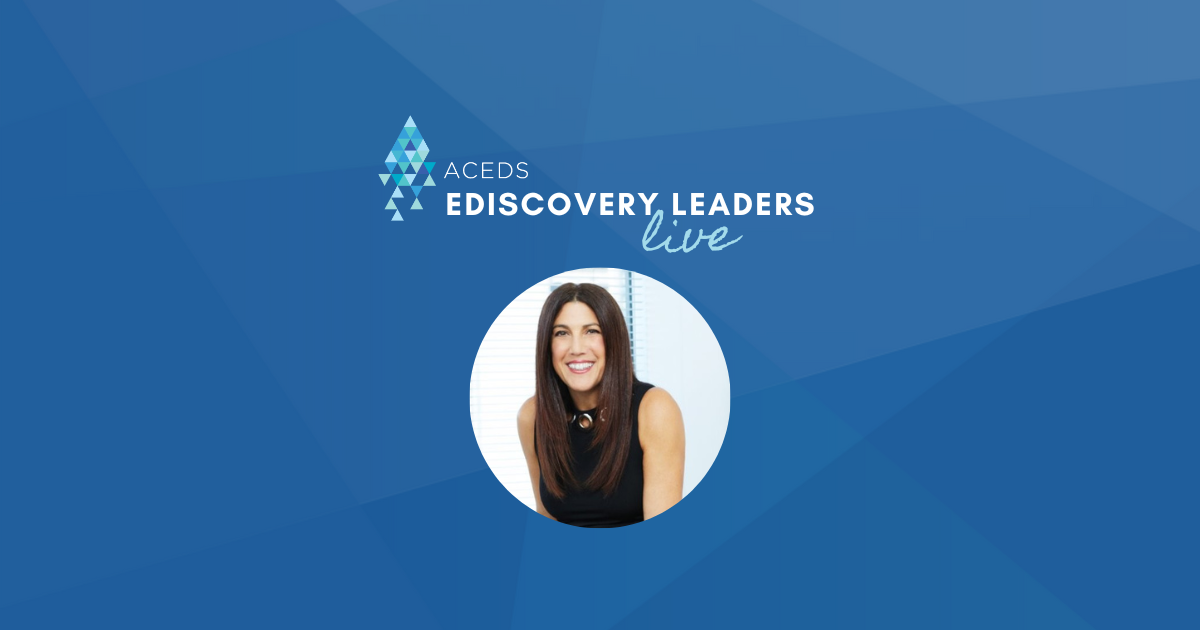eDiscovery Leaders Live: Susan Wortzman of McCarthy Tétrault
Susan Wortzman, a partner at McCarthy Tétrault, joins George Socha, Senior Vice President of Brand Awareness at Reveal, for ACEDS #eDiscoveryLeadersLive.
Susan is a partner in the Toronto offices of McCarthy Tétrault and leads the firm’s e-Discovery and information management practice. She was named one of the Top 25 Most Influential Lawyers in 2020 by Canadian Lawyer Magazine. Susan also is the Founder of MT>3, formerly Wortzmans, which is recognized as Canada’s leading law firm specializing in e-Discovery and information governance. MT>3 was acquired by McCarthy Tétrault on December 31, 2016. Susan’s expertise in e-Discovery was developed during her long tenure as a partner at one of Canada’s leading litigation firms, where her practice encompassed a broad range of civil litigation, acting for corporate clients, small to mid-sized businesses and individuals in a wide variety of commercial disputes.
Susan shared her journey with us, from her initial introduction to discovery through joined McCarthys. She discussed the firm’s eDiscovery and related practices, talking about how their team is structured and what let them to building client solutions. Susan then spent the bulk of the session delving into machine learning and AI: discussing how they use those capabilities, offering examples of what they have done, and describing the benefits. Finally, Susan talked about how the Canadian market compares with market elsewhere and what she thinks the future might hold in this arena.
Key Highlights
- [2:28] Susan’s introduction to eDiscovery.
- [4:13] Starting her own eDiscovery consulting firm and then joining McCarthys.
- [4:24] The practice at McCarthys: eDiscovery, information governance, and more.
- [6:26] How their team is structured and how that led them to building other client solutions.
- [7:43] Using machine learning and AI to build client solutions.
- [8:38] How they use AI and machine learning to tackle privilege.
- [10:34] Using enhanced prebuilt AI models: privilege example.
- [11:34] Using enhanced prebuilt AI models: toxic workplace example.
- [12:22] How they train prebuilt AI models.
- [13:33] Just how good the results of using prebuilt AI models really were.
- [14:30] Faster, cheaper, better results with the privilege model.
- [15:57] Building the next AI model.
- [16:49] Improving AI models.
- [18:41] Taking AI beyond litigation.
- [20:00] Building a solution for mass actions.
- [21:23] Using machine learning daily.
- [22:22] Helping their attorneys – and their clients – understand how AI can help them.
- [24:44] How the Canadian market differs from the US and other markets.
- [27:24] What the future holds.
Key Quotes
-
- “Because of our experience using machine learning, using AI technology, having developers on our team, we’ve branched out far beyond just eDiscovery.”
- “Our answer to our clients is always, ‘The best result is usually a combination of the human and the technology, so how do we combine those?’”
- “Its great to start with some of the [AI] models, that are prebuilt models, but really its about the supplemental training that’s going to get us the best result.”
- “We worked on a case recently…and we had to get through the records really quickly and really do just a privilege review. We took the data from the other two cases and we took a sample of privileged records, we took a sample of not privileged records, and we used that to train and prebuild the model at it was really, really successful. Then we had one of the subject matter experts go in, review also another few hundred records from the new case on top of it, and we ran the model and it was unbelievably accurate and successful.”
- “We’re using machine learning every day in our cases.”
- “I used to always feel that we were 5, 10 years behind what law firms were doing in the US and now I feel like we’re on par, we’re equal.”
